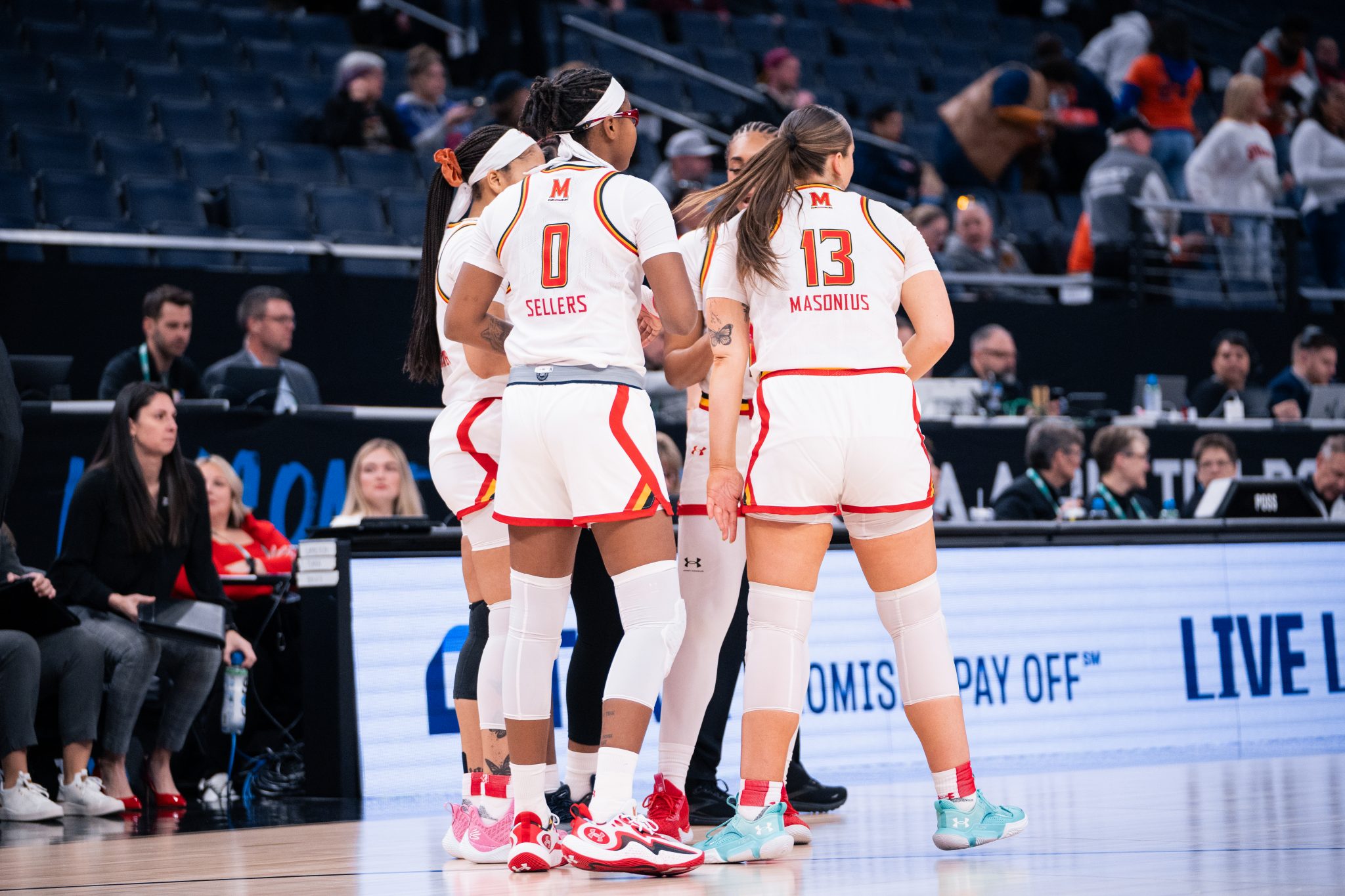Fresh off an Elite Eight run, Maryland women’s basketball coach Brenda Frese outlined her excitement for the 2023-24 season at the program’s media day last October.
She said a big reason was the Terps’ added depth. They needed it with the departures of first-round WNBA draft picks Diamond Miller and Abby Meyers, which led to Frese expecting the team to score by committee.
The depth was on full display in the season-opener when Maryland beat Harvard 98-75 with 10 different scorers and four players finishing in double-digits.
But the Terps’ depth didn’t last, as three different players suffered season-ending injuries and key players missed time with short-term absences.
Maryland women’s basketball’s potential for the 2023-24 season was limited by its lack of depth as the season wore on. The Terps failed to reach the 20-win mark for the first time since the 2003-04 season and didn’t make it past the first round of the NCAA tournament since missing it in 2010.
Despite their struggles, the Terps still showed flashes of greatness throughout the season.
“When I look back on this season, I appreciate this team’s resiliency,” Frese said after the team’s first-round loss to Iowa State. “[They] came in every single day and worked and put their head down in spite of a lot of injuries and lack of depth to be able to put us in the tournament this year.”
Red-shirt sophomore Emma Chardon scored a career-high 10 points on 5-for-5 shooting against Harvard in her first game back after tearing her meniscus at the start of the 2022-23 season.
Multiple teammates predicted Chardon would have a breakout year, but another injury kept her from that possibility. She tore her ACL on Nov. 29 — the first of three season-ending injuries and one of two torn ACL’s on the team.
[Maryland women’s basketball guard Summer Bostock enters transfer portal]
Freshman Riley Nelson tore her ACL against Purdue on Jan. 14, leaving the Terps without a crucial role player. Nelson played in all 16 games before her injury, averaging 5.1 points and scoring in double digits three times.
Maryland was 11-5 through the first 16 games of the season when Nelson was coming in off the bench.
The limited bench showed against Michigan, where the team fell just short in a 79-77 overtime loss. Bri McDaniel was ejected after an altercation with Michigan’s Lauren Hansen, and Shyanne Sellers and Brinae Alexander both fouled out, leaving the Terps with only five players and no point guard for most of overtime.
“Their depth wore us out,” Frese said after the loss.
That game began a four-game losing streak, the team’s longest since the 2002-03 season, which was Frese’s first with the Terps.
Maryland took another hit on Jan. 28, when Sellers suffered a knee injury in the first half against Penn State. When Sellers left the game, the Terps were trailing by 11 points— they lost the contest by 36 points, their second-largest loss this season.
The Nittany Lions defeat was a turning point. Sellers said the team held a meeting to talk through what they needed from each other.
“Teams were gonna fall apart around that time if they were in our shoes,” Sellers said. “We got it together and we just leaned on each other.”
The Terps lost their next two games, including one where Sellers sat out due to her knee injury, but began to show signs of improvement.
Maryland trailed then-No. 10 Indiana by 23 points at the beginning of the third quarter, but pulled within six in the fourth frame without Sellers. She returned for the Terps’ bout with then-No. 3 Iowa, where the teams were tied in the fourth quarter.
[Threes, fouls and rebounds led to Maryland women’s basketball blowing a 20-point lead]
It showed how Frese’s team could battle any program in the country, even with their limited numbers.
But injuries weren’t done plaguing the team. Lavender Briggs went down with a season-ending knee injury on Feb. 21, leaving the Terps without one of their best defenders and three-point shooters.
Maryland finished the regular season 1-2 as it faced Indiana and Ohio State on the road without Briggs.
“We all know that we want to finish the rest of the season for Lav and for Riley and for Emma, all the people that’ve been injured and we’re just gonna play hard for them,” Jakia Brown-Turner said.
Maryland’s readiness to fight was clear in the quarterfinals of the Big Ten tournament, beating then-No. 4 Ohio State 82-61 to keep a 20-year streak of beating a ranked opponent alive. It was also the first time the Terps beat a top-5 team since 2014.
That upset win helped seal a spot in the NCAA tournament for Maryland, making it 14 straight years that the team made the tournament.
Maryland also saw major individual improvements throughout the season. Sellers took on a new role as the team’s starting point guard while increasing her points, rebounds and assists per game. McDaniel more than quadrupled her scoring average, finishing the season with 12.6 points per game.
But it wasn’t enough for the Terps to meet the standard they’ve set for themselves under Frese.
While Maryland’s season ended in the first round, the coach remained proud of her team.
“They never gave up on us,” Frese said. “I’m really proud of them for trusting us and just continuing to battle and stay the course.”



